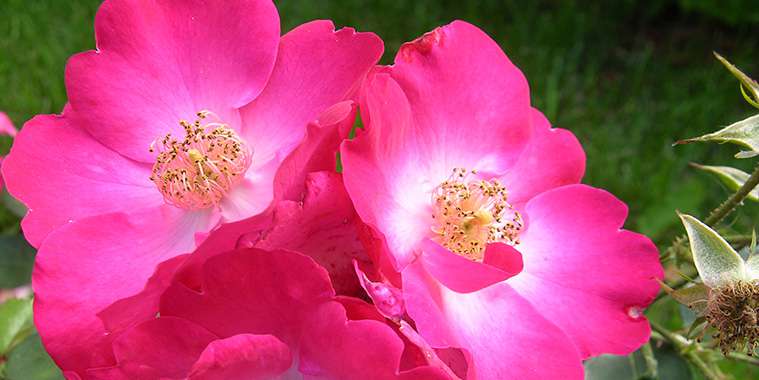Every new gardener has a romance with roses. We all have visions of luxurious, many petalled beauties climbing up pergolas and curling around windows, and wafting beautiful scents into the garden.
Lovely vision, but not so accurate in Manitoba. Still, we can come close with some of our regionally bred shrub roses and even a few of the more exotic types that are grown on the roots of hardy native stock.
If you’ve read up on roses, chances are you will be given precise spring pruning recommendations, or told that they need to be protected over winter. Neither is true of our local roses which have been bred to withstand the coldest weather. The only pruning they need is the removal of any dead wood – usually that which stuck up above the snow line -- and perhaps, if you like, a little shaping, although I don’t even bother doing that. As far as protection is concerned, unless you are trying to overwinter tender tea roses here, you can just leave these shrub roses to the elements.
There are some things, though, that you can do to ensure that the roses you grow are healthy with dark, shiny leaves and plenty of blooms. Add a tablespoon of chelated iron to each gallon of soluble fertilizer mix to counteract iron deficiencies caused by it being too rainy or too dry. Two teaspoons of Epsom salts per rose per season will replace magnesium. Roses need plenty of air circulation to avoid the growth of mould and mildews. They do best in rich, well-composted soils, away from competition from big tree roots. They also need at least six hours of sunlight a day.
Water is important, healthy roses should have about an inch (five gallons) of water a week. Water in the morning if you can and try to water at root level to avoid moisture build-up on leaves which promotes mildew and mold diseases. They benefit from a nice feed of water soluble fertilizer every couple of weeks, starting in spring and continuing through to the end of July, no later than August 15. The rose needs time to shut down for winter. Or use a slow release fertilizer added to the soil in spring and replenished about the end of July.
Deadheading is an important part of keeping roses in bloom. Cut the spent rose from the stem just above the first five-leafed, outward facing bud (the stem above will have three leaves). This will ensure that the new rose bud will have a sturdy stem to grow on. Again, stop deadheading in mid August to help the rose get ready for winter.
What roses should you grow? The hardiest roses are the ones bred right here in Manitoba at the Morden Research Station. They are known as the Parkland series and will even grow as far north as zone 2. One of my favourites is ‘Morden Blush’, a medium pink with 50 petals. It grows about three feet tall and wide and is hardy to zone 2. A floribunda (meaning more than one rose per stem), it grows in clusters of four.
If you have always dreamed of blood red roses in the garden then choose ‘Hope for Humanity’. This rose produces 15 to 25 petals with a light fragrance but it grows three to five feet tall with four to five blossoms a spray.
Morden ‘Sunrise’ is another favourite growing in clusters of three to four with yellow to peach coloured blossoms. It has fewer petals (8-12), the better to show its glowing heart when it opens all the way. It is strongly scented, with shiny dark green leaves.
Introduced a half dozen years ago is the pretty little ‘Never Alone Rose’. It was dedicated to raise funds for the Never Alone Foundation, an organization started by Winnipeg’s own Lyle Bauer, who went through the isolating experience of having throat cancer in 2004 and vowed to ensure that there would be support for others and their families in the future. A portion of every rose purchase goes to the foundation.
It’s a very worthy rose in the Parkland series, with small dark-pink petals fading to white in the centre. It rises only two feet, so plant it at the front of your display.
There are many, more choices in the hardy rose family, but if you are just starting out, these are all sure-fire winners that you will be very glad you planted.
Dorothy Dobbie is the publisher of the Manitoba Gardener. Look for localgardener.net and listen to her weekly show on CJNU 97.3 FM every Sunday morning at 8.



